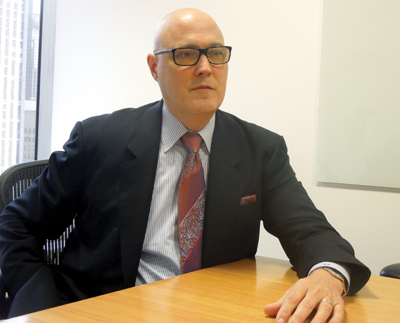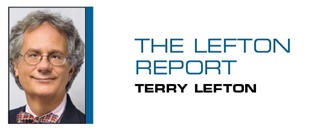Ski Austin was hired to work for NBA special events in 1989. There were less than a handful of people in the department and about the same number of annual events. Walkie-talkies were the only form of mobile communications; cellphones were an event planner’s pipe dream.
When Austin retired Oct. 3, he was overseeing an event staff of more than 75, including 13 in China, producing more than 250 events annually in 35 countries. Oh, and the NBA had grown from 25 to 30 teams, and added the WNBA and the NBA D-League.
“The first thing I worked on was our end-of-season staff cruise in New York harbor,” Austin said recently with a laugh. “That was when we had an offseason. … We got really good at adding things.”
 |
Ski Austin saw the number of NBA annual events balloon in his 25 years with the league.
Photo by: TERRY LEFTON / STAFF
|
When you ask people in the business about Austin, the phrase “unsung hero” comes up frequently. Austin was never the guy in the spotlight. He was the one ensuring that the spotlight was installed properly and working perfectly. If Austin has a legacy after a quarter-century at the league, it’s that NBA events have long been renowned as the smoothest and most buttoned-up in sports.
Of course, they probably had to be, because no one was, is or will be more detail-obsessed than former NBA Commissioner David Stern.
“David would always remind you of his ‘relentless pursuit of perfection,’” Austin said. “So it became a fundamental of ours to constantly check, double check and check again. There was no other way.”
“David always said the league is defined by its events,” said Steve Mills, the New York Knicks general manager who was running the NBA’s four-person special events department when he hired Austin. “You think of what the league has grown into and all the things Ski has been a part of, and I would say he’s had a big part, largely unsung, in the growth of the NBA.”
Austin was instrumental in NBA All-Star Weekend becoming a series of events lasting well beyond a simple weekend. He brought the NBA Jam Session to life in 1993 and staged an All-Star Game in front of a record crowd of 108,713 in 2010. He also planned and executed a seemingly unending series of international events, including games in China and the original Dream Team, which helped the league attain a global footprint now envied by every other American stick-and-ball property.
“The number of events Ski ran for the NBA around the world — from games in Turkey to lunch for hundreds of us at the Great Wall of China — is astronomical,” Stern said. “But even that number doesn’t convey his intensity and his passion for excellence. Every time we did an event — and we did them all over the world — Ski’s post-event mantra was, ‘How do we do it better next time?’ And every time, he did.”
While he was a drama major at Baylor, Austin was more interested in directing actors than being one. Just out of college, Austin worked at the Equity Waiver Theater in Los Angeles. You can draw a straight line from that aspiring Elia Kazan to Austin coordinating the planning, people and pieces that go into an NBA event in China or an All-Star Game.
“It’s why I love theater,” he said. “What I like most about live events is their spontaneity. No matter how much planning there is, you have one moment to get it right.”
Something unexpected will always upset the most detailed schemes of event organizers like Austin. Sometimes it’s a bus full of team presidents transported to the neighboring state in error, courtesy of a bus driver imported from another market. More often, it’s weather, like the 12-plus inches of snow that fell three days before that 2010 All-Star Game in Dallas.
“It’s always the things you can’t control, like weather, that make you change priorities in the middle of an event,” Austin said.
Then it’s time to improvise, and it’s those capabilities that Austin’s peers laud the most.
“He was the Arthur Fiedler of the NBA,” said Terry Lyons, a 27-year NBA communications executive. “He had this great ability to very calmly conduct this orchestra, even when the music was at its loudest.”
Dan Mannix worked for Austin at the NBA from 1992 to 1998 before founding marketing and event agency LeadDog Marketing Group. “Ski’s one of the rare guys who always had both sides of the brain working,” Mannix recalled. “He was so good at attention to detail and how one decision or event would impact another, but he could also come up with creative solutions on the spot to any problem.”
Those who know him say it was Austin’s ability to serve the sometimes conflicting needs of various league departments that made him a success.
“You need to understand what’s important internally,” said Austin, when asked if he had any advice for those who would follow his career choice. “When we do an All-Star Game, there are 26 departments. Each has its own agenda, and for the event to be successful, you have to balance them all.”
Austin counts his experience with the original Dream Team in 1992 as the high point. “The whole thing was surreal,” he said. “Whenever we had to go somewhere, it was like when the Beatles first landed at JFK.”
The taciturn Austin offered no insight about his decision to retire, something he’d been considering for a few years. “It was just the right time,” he said. “Our only child is in college, and it just seemed right.”
Austin’s position won’t be replaced and his responsibilities will be split among members of his senior staff, who have been there for years. Austin will continue as a consultant, and with the next All-Star Game in New York City, you get the feeling his services will be put to use this season. After that?
“I can’t believe I’m saying this,” said Austin, who spent 175 days on the road during his busiest years, “but I really want to do a little traveling.”
Ireland and Scotland are on his list, and Austin admits he’s barely touched nearby New England.
And with that, the man who masterminded more NBA events than anyone excused himself to supervise one final NBA event.
“Our staff is running my farewell party tonight at the New York Athletic Club,” he said with the contented look of a marathoner nearing the finish line, “but I need to walk over there and check out the setup first.”
Terry Lefton can be reached at tlefton@sportsbusinessjournal.com.





